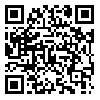BibTeX | RIS | EndNote | Medlars | ProCite | Reference Manager | RefWorks
Send citation to:
URL: http://jdisabilstud.org/article-1-672-en.html
2- Alame Tabataba’i University
Objective: Autism is a neurodevelopmental disorder characterized by deficits in communication and social interactions, as well as patterns of repetitive or restrictive behaviors and interests. Challenging behavior occurs at very high rates among individuals with Autism and is broadly defined as behavior that jeopardizes an individual or excludes them from community involvement. Common challenging behaviors that occur across the lifespan include self-stimulation and stereotypy, self-injury, noncompliance, physical aggression, and other destructive or disruptive behaviors. Challenging behaviors impede learning, social and adaptive skill acquisition, and may lead to extended hospital admissions or the use of physical or chemical restraints. A number of studies provide evidence for the use of behavioral and psychosocial interventions as a first line treatment for the core symptoms of Autism in children. This study examined the impact of psycho-social intervention on challenging behavior in children with high- functioning autism spectrum disorder.
Methods: According to the objective of the study, a two-group experimental design with pretest-posttest was administered. The statistical population of research included 24 children with autistic spectrum disorder, aged 8-12 years old who were divided into two groups. First, the ASD was used to study the symptoms of autistic disorder in children and to determine the severity and number of autistic traits. Then, GARS check list was applied to evaluate the challenging behavior. Only the experimental group participated in the psycho-social intervention group training. The group training ran for both parents and children in 10 sessions each lasting for 60 minutes. Later on, the post-test was administered for both groups.
Group training objective summary: During these ten sessions, parents learned how to behave and control the challenging behavior in their children. First; they become familiar with ASD syndrome and types of challenging behavior in their children. As the sessions continued parents learned how to recode their children behaviors at home. During the sessions it was emphasized that parents need to control stress in their children behaviors. In psycho-social program, parents play an active role in controlling and training their children's behaviors.
In 10 sessions held for the children, at first we recorded their challenging behaviors, then with games predetermined, they became aware of their challenging behaviors. We used behavior techniques such as Reinforcement and punishment in correct potions. In the following stages, children learned how to regulate their emotion in relation to the environment.
Results: The results showed that, the mean score for challenging behavior in experimental group was 34.58 (SD= 4.31) in pretest and was 24.50 (SD= 1.93) in posttest. Moreover, the mean score for social interaction in experimental group in pretest was 37.67 (SD= 4.33) and was 34.08 (SD= 4.12) in posttest. ANCOVA was used to compare the pretest and posttest results. A significant difference was observed between the two groups of this study in challenging behavior (f=21.04, P≤0.0001) and social interaction (f=5.08, P≤0.037).
Conclusion: Psycho-social intervention included both training sessions with parents and with their children. We used behavioral technique in training sessions with children. Previous reviews have supported the use of behavioral intervention for the reduction of challenging behaviors including self-injury, stereotype, and aggression. On the other hand, training self-management to children with autism spectrum disorder has a positive effect in reducing challenging behavior. Redirecting behavior involves the prompting of an alternative appropriate response contingent on occurrence of the target behavior. In our research we use the mechanism of redirecting behavior to reduce challenging behavior. Thus, we can conclude that in an intervention program that both parents and their children participate, following the taught techniques is useful to decrease challenging behavior.
| Rights and permissions | |
 |
This work is licensed under a Creative Commons Attribution-NonCommercial 4.0 International License. |




